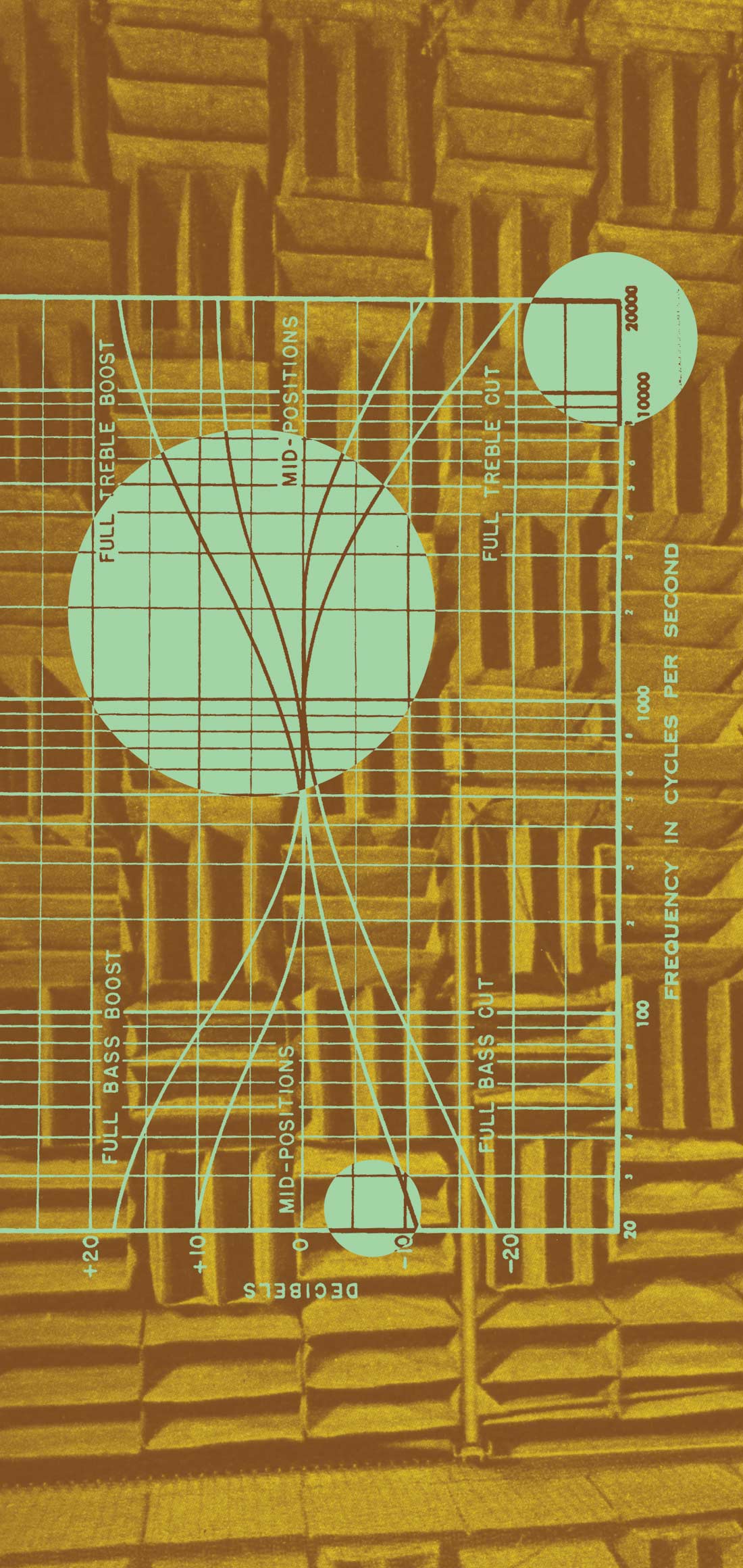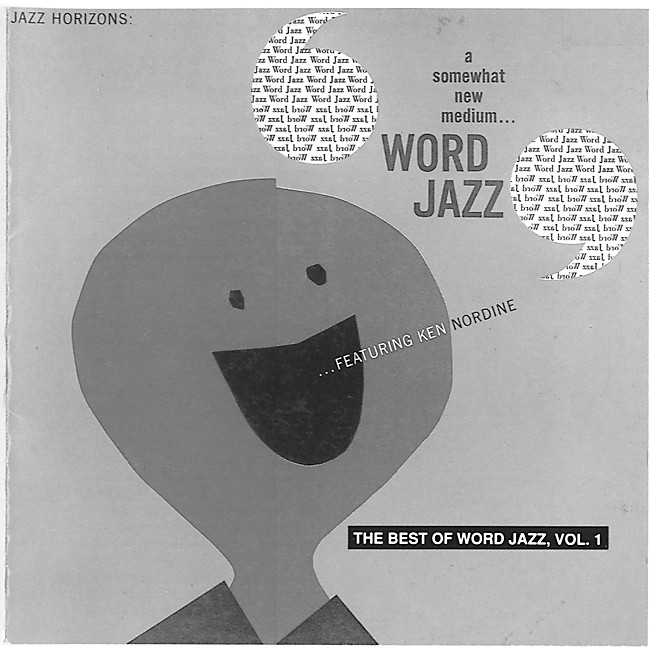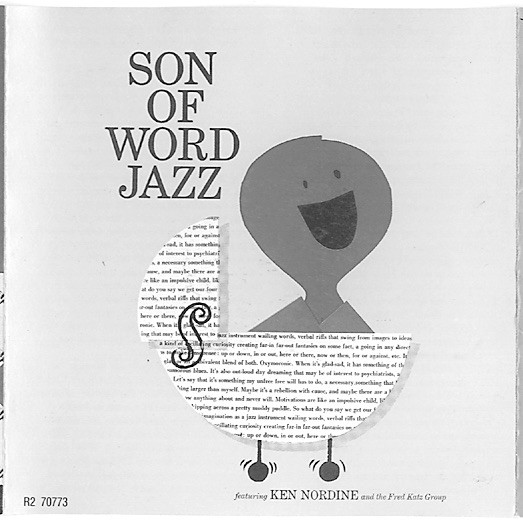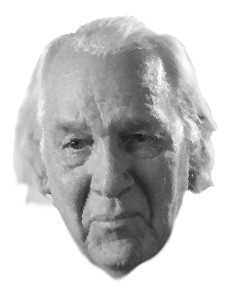Somehow, somewhere, somewhen, someone shared with me the sonic sensibilities of Ken Nordine. I was delighted with his word play (or were the words playing with him?), his deep, clear voice (an accidental hypnotist?), and the fresh and exciting music that slid, skittered, and strode in and around his sung- spoken thoughts. Nordine began his career as a radio announcer and commercial voiceover artist in the '40s. In the '50s, he started recording his own material. He released Word Jazz, Son of Word Jazz, Next!, and Volume II. The success of these recordings earned him a cult status that's still strong today. Throughout the '60s and '70s, he continued doing voice work (several hundred of them a year!) and adding to his personal catalog. In the '80s, among many other projects, he created over 300 30-minute programs for National Public Radio. Currently Nordine hosts a weekly radio program, still does commercials, creates visual and sound art, and kindly obliges interviewers who call him up asking him what he's doing.
I've been playing around with a special phone that I have so that I can make funny phone calls.
How does that work?
I have a lot of phone interviews done and I'm going to mix them with music. I'll call a friend of mine who wants to play the game, and who has the sense of humor to do it, and I'll ask him for, maybe, a brain transplant or something. He'll be Dr. Curtis, for example, and I'll say, "Hey Doc, do you have any unwashed brains?"
[laugh] Are you planning on releasing these?
I never think ahead that far. If it comes off the way I conceive it, I'll slip it into one of my radio shows. But to get back to what you're primarily interested in, what can I tell you that would be helpful?
Well, one of the things I was curious about was how you go about creating your recordings.
With the orchestrated music, I write to the music, generally. With the free form jazz, I write to the phrasing of the music. I'll say, "There's room here for something." That's one way. The other way is using live music in the studio, with the musicians listening to what I'm doing and I listening to what they're doing, and it becomes a kind of empathic situation. So if I'm doing something, as I was the other day, about the arachnid family, I'll say to the musician, "You can be the web, and you can play the attitude of the spider waiting for some food to come by." So each musician brings to the fantasy whatever they feel is appropriate. Or, in another way, I'll say, "Hey, let's get a good groove going." And then I'll do something that fits with that groove metrically. Because I work with metrics pretty much. For example, the spider thing I was working on is a 6/5 rhythm. So I knew that would work with some of the things the percussionist was doing. He did a wonderful thing that sounded like the light coming off of the web. I'd say, "It's a good year for spiders," and he'd go, "tchi-tchi-tchi" ... "Or so it seems. Incessantly weaving such gossamer schemes." ... "ur-ah-ur" "It should make one wonder what blueprint within instinctively causes the spider to spin." ... "phew-shew-phew." That sort of thing. It's really an empathic relationship between the musicians' hearing and my hearing, so there's room for them and there's room for what I do. One of the beautiful things about jazz music is that when it really works each of the players allows room for the others. So there's not a competitive "Hey, I can step on top of what you're doing" thing. Those are the groups that don't last.
It seems that there's a natural soloist quality to being a vocalist, though?
Yeah, but even at that, some soloists don't leave room. They figure they have to be singing all the time. The best, of course, is when everyone is listening and there's a relaxed togetherness. That's what I strive for.
Do you work as the main producer at these sessions?
Yeah.
Have you ever worked as just a producer and not as a musical participant or composer?
No, I've always worked on things that I'm really involved in. I've done other things where other people were involved. But the thing that's closest to my heart is doing something where there's a kind of a rapport with each other. There's nobody saying, "Hey, faster, or slower, or louder, or softer." Or, you have to change the feel of the message to fit someone's preconceived idea of what the audience is going to react to. That happens more in the commercial world. When you walk into that world you recognize that immediately.
Are you doing many commercials these days?
I do some. Not as many I used to do. I guess I just don't try as hard anymore.
Someone told me that you have a home studio where you do some of that...
The rest of this article is only available with a Basic or Premium subscription, or by purchasing back issue #15. For an upcoming year's free subscription, and our current issue on PDF...
Or Learn More




